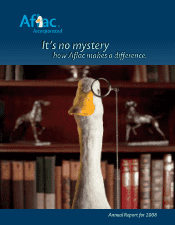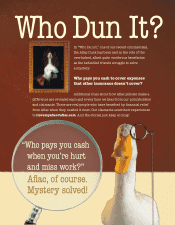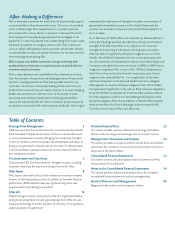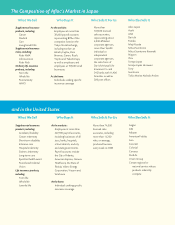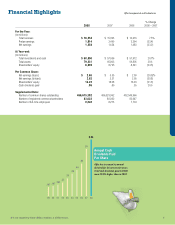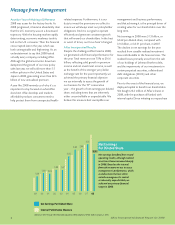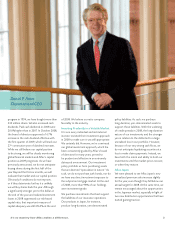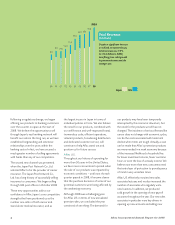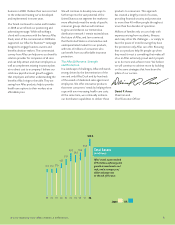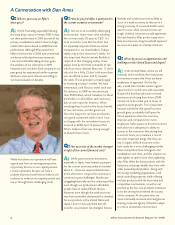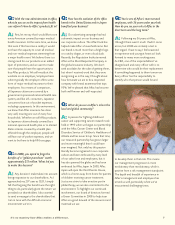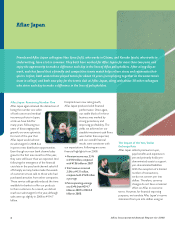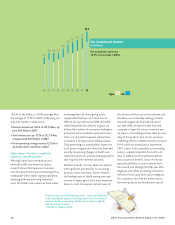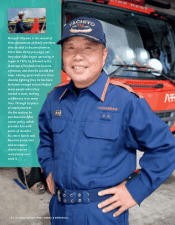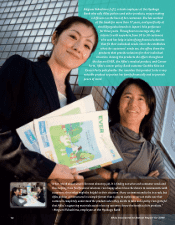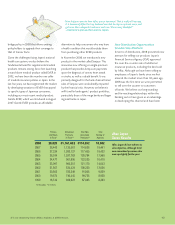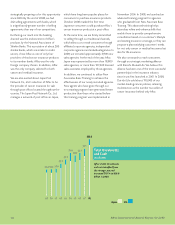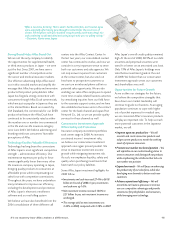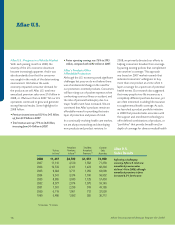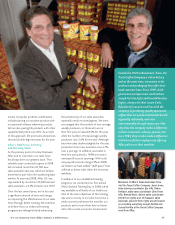Aflac 2008 Annual Report Download - page 11
Download and view the complete annual report
Please find page 11 of the 2008 Aflac annual report below. You can navigate through the pages in the report by either clicking on the pages listed below, or by using the keyword search tool below to find specific information within the annual report.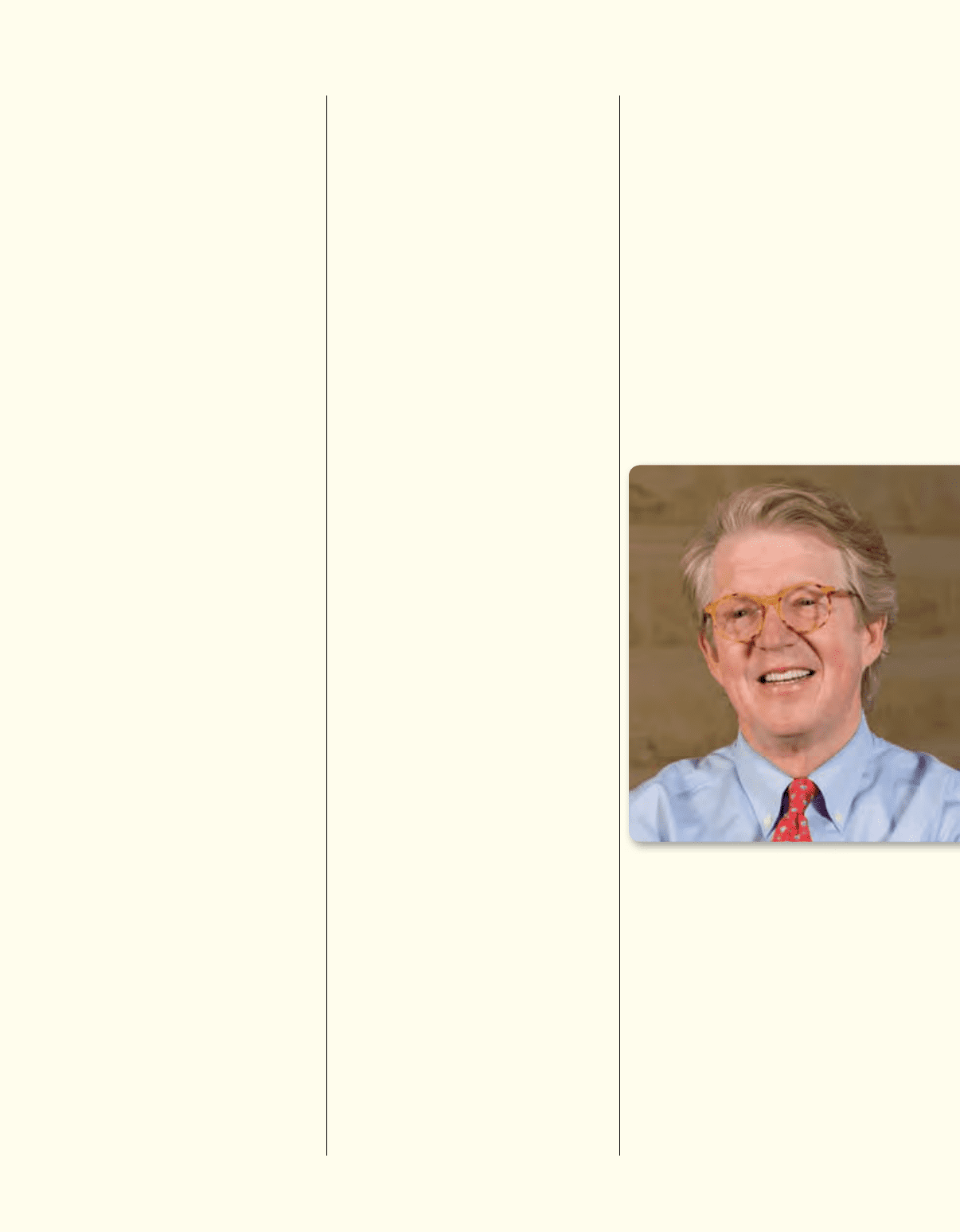
7
It’s no mystery how Aflac makes a difference.
Q: With the new administration in office,
what do you see as the impact from health
care reform? How do Aflac’s products fit in?
A: First, let me say that I would like to see
every American covered by major medical
health insurance. At the same time, we know
that even if this becomes a reality, it would
not have the capacity to cover all medical
and non-medical expenses stemming from
a major health event. We believe there is a
strong need for our products as an added
layer of protection, and we want to make
sure that people have the opportunity to
buy Aflac products. We sell mostly at the
worksite on an employer/employee basis
where typically the employer offers some
form of major medical insurance to their
employees. As a means of comparison,
all Japanese citizens are covered by a
government-sponsored national health care
system, and like U.S. consumers, Japanese
consumers face out-of-pocket expenses,
including copayments. In this environment,
we know that Aflac insurance has done
very well, insuring one out of every four
households. Whether we sell Aflac products
to Japanese citizens already covered by a
national-sponsored health plan or to United
States citizens covered by a health plan
offered through the employer, people will
still face out-of-pocket expenses, and we
want to be there to help fill those gaps.
Q: In 2008, you opted to forgo the
benefits of a “golden parachute” worth
approximately $13 million. What led you
to make this decision?
A: Any decision I make takes into account
being responsive to our shareholders. As I
approached my 20th year as CEO, I simply
felt that forgoing this benefit was the right
thing to do, particularly given the return we
provided our shareholders. I also wanted
to send a message to the shareholders that
I am in tune with the difficult economic
environment we’re in.
Q: How has the evolution of the Aflac
brand in the United States and in Japan
benefited your business?
A: Our advertising campaign has had
a dramatic impact on our business and
our corporate culture. The Aflac Duck has
helped make Aflac a household name. But
our brand is much more than a bright logo
or a catchy slogan, or even a loud duck.
Recently, the Reputation Institute named
Aflac as the Most Respected Company in
the global insurance industry. We don’t
seek accolades for the sake of getting them,
but when I received word that they were
recognizing us in this way, I thought about
how fortunate we are to be a respected
company with brand awareness that tops
93%. We’re pleased that Aflac has become
both well-known and well-respected.
Q: What do you see as Aflac’s role in the
local and global community?
A: A passion for fighting childhood
cancer and supporting cancer research took
hold in 1995 when we began our partnership
with the Aflac Cancer Center and Blood
Disorders Service of Children’s Healthcare of
Atlanta and has never let up. Since that time,
our treasured partnership has grown larger
and more meaningful than I could have
ever imagined. Not only has this passion
literally become ingrained in our corporate
culture and been embraced by every level
of our sales force and employees, but it
has also spanned the globe and has been
embraced by Aflac Japan. In 2009, Aflac
Japan will open the third Parents House,
which is a home away from home for parents
of children receiving cancer treatment.
Just as we strive to take an active part in
philanthropy, we are also committed to the
environment. To highlight our continued
involvement, our board of directors formed
a Green Committee in 2008 to help steer
Aflac as a good steward of the resources and
materials we use.
Q: You’re one of Aflac’s more tenured
employees, with 36 years under your belt.
How do you see your role at Aflac in the
short term and the long term?
A: Following my 36 years at Aflac,
I thought there wasn’t much I hadn’t come
across, but 2008 was certainly a test in
that regard. I have to say, I feel seasoned
in experience and young at heart as I look
forward to many more exciting years.
As CEO, one of the responsibilities I’ve
charged each and every officer with is to
determine who would be their replacement
if something happened to them tomorrow.
Every officer has the responsibility to
identify who that person would be and
to develop them in that role. This means
our management progression is more
evolutionary than revolutionary, which is
positive from a risk management standpoint.
The depth and breadth of experience in
Aflac’s management and employees has
served us well, particularly when we’ve
encountered challenging times.

